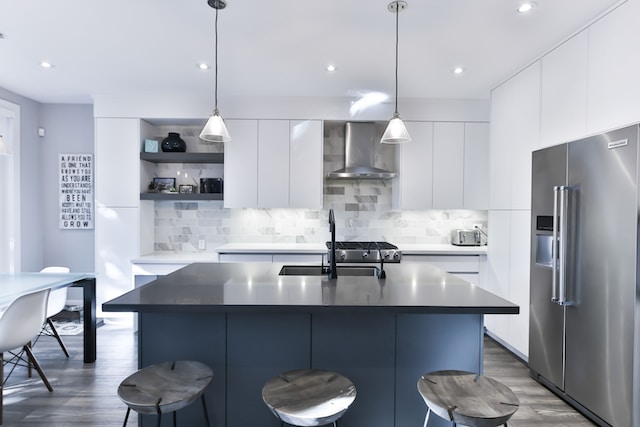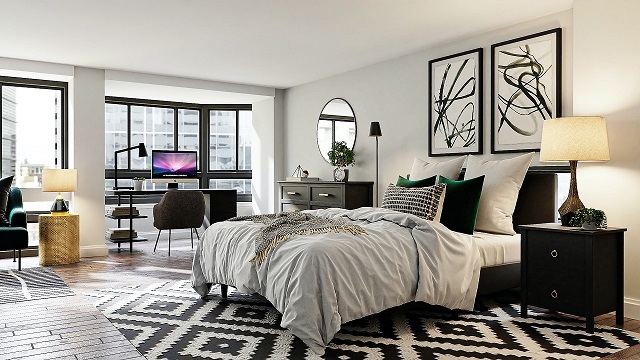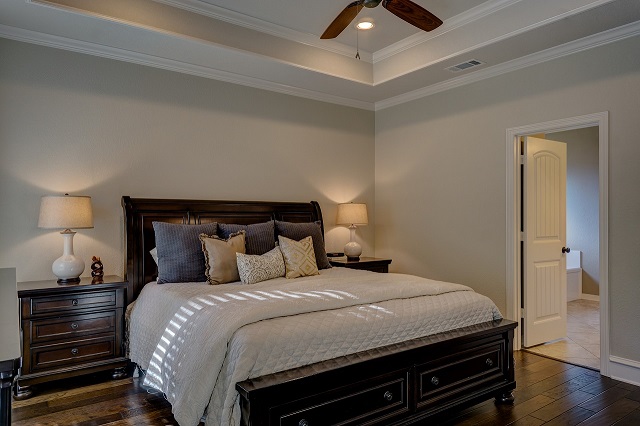When it comes to home improvement, few projects offer as much impact as a fresh coat of paint on your interior walls. Not only does it rejuvenate your living space, but it also increases the overall value of your home. However, before you pick up a paintbrush or call a professional, it’s essential to understand the cost dynamics involved. In this comprehensive guide, we’ll break down everything you need to know about house interior painting cost estimates, including factors that influence pricing, cost breakdowns by room, and tips for getting the best value for your money.
Table of Contents
Why Interior Painting is Worth the Investment
A fresh interior paint job is more than just a cosmetic upgrade—it’s an investment in your home’s future. Whether you plan to sell your house or simply want to create a more inviting living space, a professional paint job can make a huge difference. Here are some reasons why you should consider updating your interior paint:
- Enhanced Aesthetics: A new paint color can transform the ambiance of your home, making rooms feel brighter, larger, and more modern.
- Increased Home Value: Prospective buyers are often drawn to homes that have been well-maintained and updated. A recent paint job can boost your home’s market appeal.
- Protection: Quality paint helps protect walls from moisture, mildew, and everyday wear and tear.
- Customization: With a myriad of colors and finishes available, painting allows you to personalize your space to reflect your style and personality.
Understanding the value behind your investment sets the stage for making informed decisions about your interior painting project.
Key Factors Affecting Your House Interior Painting Cost
Before you start shopping for quotes or selecting colors, it’s crucial to understand the variables that influence the overall cost of an interior painting project. Here are the primary factors:
1. Square Footage and Number of Rooms
The size of your home plays a significant role in determining the cost. Larger homes or houses with many rooms will require more paint and labor. Even within the same house, rooms of different sizes and shapes may require varying amounts of paint and time.
2. Quality of Paint and Materials
Paint quality can vary dramatically. High-quality paints with better coverage, durability, and finish may cost more upfront but can save money in the long run by lasting longer and providing a more professional finish.
- Standard vs. Premium Paint: Standard paints are often more budget-friendly, while premium paints offer superior coverage and longevity.
- Eco-Friendly Options: Environmentally friendly paints can be slightly more expensive but are better for your health and the environment.
3. Labor Costs
Labor is typically the most significant component of your interior painting cost estimate. Labor costs can vary based on:
- Geographical Location: In urban areas or regions with a high cost of living, labor rates may be higher.
- Experience and Reputation: Established contractors with a proven track record may charge a premium for their expertise.
- Project Complexity: Detailed work, such as intricate trim or high ceilings, requires additional time and effort.
4. Preparation and Repair Work
Preparation is key to a long-lasting paint job. The condition of your walls and surfaces can impact the overall cost:
- Surface Repairs: Cracks, holes, or damaged surfaces will need repair before painting can begin.
- Cleaning and Priming: Proper cleaning and priming of surfaces ensure that the paint adheres well and lasts longer.
- Moving Furniture and Covering Floors: Some contractors include these services in their quote, while others charge extra.
5. Additional Services
Sometimes, painting projects require additional services that can add to the overall cost:
- Wallpaper Removal: Removing old wallpaper before painting.
- Decorative Finishes: Techniques such as faux finishes or textured walls.
- Trim and Detail Work: Painting trim, molding, and baseboards often requires extra time and care.
Detailed Cost Breakdown
Understanding how each component contributes to the total cost can help you create a realistic budget for your project. Here’s a closer look at the different cost elements involved.
Materials
Paint: The primary material in any painting project is, of course, the paint itself. Here are some considerations:
- Volume Needed: Based on the square footage and number of coats required, you’ll need to calculate the amount of paint.
- Type of Paint: Options include latex, oil-based, and specialty paints for different surfaces.
- Cost per Gallon: Depending on quality, paint prices can range from $25 to $70 per gallon or more.
Supplies: In addition to paint, you’ll need supplies such as brushes, rollers, painter’s tape, drop cloths, and sandpaper. While these items may seem minor compared to the cost of paint and labor, they can add up, especially if high-quality materials are used.
Labor
Professional painters typically charge by the hour or by the square foot. Here’s what to consider:
- Hourly Rates: In many regions, professional painters charge between $25 and $75 per hour.
- Square Footage Pricing: Some contractors offer a per-square-foot rate, which can vary widely depending on the complexity of the job.
- Team Size: Larger teams might complete the job faster, but the overall cost might be higher if the project requires specialized skills.
Preparation and Additional Services
Before the actual painting begins, several preparatory steps can influence the cost:
- Surface Preparation: Cleaning, sanding, and repairing surfaces can take a significant amount of time.
- Priming: Applying primer is crucial for ensuring that the paint adheres properly. High-quality primer can be as expensive as premium paint.
- Cleanup: Post-painting cleanup, including the removal of drop cloths and cleaning brushes, may also be factored into the labor cost.
Cost Estimates by Room
Different rooms in your house may have varying painting needs. Here’s a rough guide to what you might expect:
Living Room
The living room is often one of the largest spaces in a home and may require more paint and detailed work, such as painting crown molding or decorative trims.
- Average Cost: For an average-sized living room (around 300–400 square feet), you might expect to pay between $500 and $1,500 for a professional paint job.
- Considerations: High ceilings, large windows, or intricate trim work can increase costs.
Kitchen
Kitchens have unique challenges, including higher moisture levels and the potential need for specialized, washable paint.
- Average Cost: Painting a standard kitchen can range from $400 to $1,200.
- Considerations: The presence of cabinets, backsplashes, and appliances may require additional masking and careful painting around these features.
Bedrooms
Bedrooms are generally straightforward, but the overall cost depends on the size of the room and any additional features.
- Average Cost: A typical bedroom might cost between $300 and $1,000.
- Considerations: Accent walls, wallpaper removal, or textured ceilings can add to the cost.
Bathrooms
Bathrooms require paints that can withstand moisture and humidity. It’s essential to choose mold-resistant options.
- Average Cost: Expect to spend between $300 and $1,000 on a bathroom painting project.
- Considerations: Preparation work is critical in bathrooms, as surfaces often need extra cleaning and priming to ensure durability.
Hallways and Corridors
Although smaller in individual size, hallways and corridors can add up if you have a long or intricate layout.
- Average Cost: Depending on the total area, costs can range from $200 to $800.
- Considerations: Narrow spaces might require more meticulous work, especially if there are multiple corners or details to attend to.
DIY vs. Hiring a Professional
One of the biggest decisions you’ll face is whether to tackle the project yourself or hire professionals. Both approaches have their merits and challenges.
DIY (Do-It-Yourself)
Pros:
- Cost Savings: The most obvious benefit is saving on labor costs.
- Control: You have complete control over the color selection, technique, and timeline.
- Learning Experience: Taking on a DIY project can be a rewarding learning experience.
Cons:
- Time-Consuming: Without professional experience, the project might take longer than anticipated.
- Quality: Achieving a professional finish can be challenging, especially if you lack the proper tools or experience.
- Hidden Costs: Mistakes or the need for additional supplies can quickly add up.
Hiring a Professional
Pros:
- Quality and Efficiency: Professionals have the skills, tools, and experience to deliver a high-quality finish in a timely manner.
- Warranty: Many professional services offer warranties or guarantees on their work.
- Stress Reduction: Hiring experts removes the day-to-day stress of managing the project.
Cons:
- Cost: Labor can significantly increase the overall price.
- Less Control: You may have less direct input in the process, which might be a concern if you’re very particular about details.
- Scheduling: Coordinating schedules with a contractor can sometimes delay the start of your project.
For many homeowners, the decision boils down to budget, available time, and the level of desired professionalism in the finished product.
Regional Variations in Painting Costs
Another important aspect to consider is how your location affects interior painting cost estimates. Labor and material costs can vary dramatically based on where you live.
- Urban vs. Rural: Urban areas often have higher labor rates due to increased overhead and cost of living, whereas rural areas might offer more competitive pricing.
- Local Demand: In regions where there’s a high demand for home improvement services, prices may be slightly elevated.
- Economic Factors: Local economic conditions, such as wage levels and supply chain costs, can also influence the overall cost.
Before finalizing your budget, it’s a good idea to research local contractors, ask for multiple quotes, and compare prices to ensure you’re getting a fair estimate.
Tips for Getting the Best Value
To ensure you get the best value for your money, consider these practical tips:
1. Obtain Multiple Quotes
Don’t settle for the first quote you receive. Get estimates from several contractors to compare pricing, timelines, and service inclusions. This will help you identify a competitive rate and understand what each contractor offers.
2. Check References and Reviews
Research potential contractors by reading online reviews and asking for references. Look for companies with a track record of quality work and reliable customer service. Personal recommendations from friends or neighbors can also be invaluable.
3. Clarify the Scope of Work
Make sure that your contractor’s estimate includes all aspects of the project—preparation, labor, materials, cleanup, and any additional services. A detailed written estimate helps avoid unexpected costs later on.
4. Negotiate Where Possible
While quality work should not be compromised, there might be room to negotiate on certain aspects, especially if you’re booking multiple services or projects. Ask if discounts or package deals are available.
5. Plan for Contingencies
Unexpected issues, such as hidden wall damage or delays in material delivery, can increase the project cost. Set aside a contingency budget—typically 10-15% of the total project cost—to cover unforeseen expenses.
6. Evaluate the Quality of Materials
Sometimes, spending a little extra on high-quality paint and supplies can save money in the long run by reducing the need for frequent touch-ups or repainting. Evaluate the benefits of premium products versus standard options.
Budgeting and Planning Your Project
A well-planned project can help you avoid overspending and ensure that the final result meets your expectations. Here’s a step-by-step approach to budgeting and planning:
- Measure Your Space:
Calculate the square footage of the areas you plan to paint. This measurement will help you estimate the amount of paint needed and provide a baseline for contractor quotes. - Decide on Paint Quality and Colors:
Research various paint brands and finishes. Consider whether you need specialized paint for kitchens or bathrooms. Narrow down your color choices, as certain finishes (like matte versus glossy) may come with different price points. - Research Local Contractors:
Create a shortlist of reputable painters in your area. Contact them for detailed quotes and ask about their experience with similar projects. - Outline the Project Scope:
Write down everything that needs to be done—from surface preparation to cleanup. The more detailed your scope, the more accurate the estimates will be. - Set a Realistic Budget:
Based on your research and quotes, set a budget that includes a contingency fund. Remember that investing in quality can yield better long-term results. - Schedule Wisely:
Timing can influence both cost and availability. If possible, avoid peak home improvement seasons when demand for contractors is high, as this can lead to higher prices and longer wait times. - Monitor the Project:
Even if you hire professionals, stay engaged with the project. Regular check-ins can help ensure the work meets your standards and that any issues are addressed promptly.
Conclusion
Estimating the cost for house interior painting involves more than simply calculating the price of paint and labor—it’s about understanding the unique needs of your home, the quality of materials you desire, and the expertise required to bring your vision to life. By considering factors such as square footage, paint quality, labor rates, and additional services, you can create a detailed and realistic budget for your project.
Whether you decide to tackle the job yourself or hire professionals, being informed is the key to achieving a beautiful, long-lasting finish. Use this guide as a roadmap to navigate the complexities of interior painting cost estimates and to ensure that your investment not only transforms your living space but also adds lasting value to your home.
Remember, a successful interior painting project starts with proper planning and budgeting. Take your time to research, compare quotes, and make decisions that align with both your aesthetic vision and financial goals. With careful planning and attention to detail, you can enjoy the many benefits of a freshly painted home—enhanced beauty, improved functionality, and increased property value.
By following the tips and guidelines provided in this comprehensive guide, you’re well on your way to turning your house interior painting project into a smooth and rewarding experience. Whether you’re updating a single room or your entire home, a well-executed paint job can truly make a difference in creating an inviting and stylish space that you’ll love for years to come.
With the insights provided above, you should now feel empowered to estimate your house interior painting costs accurately and confidently plan your project. Happy painting, and here’s to transforming your home with a splash of color!



